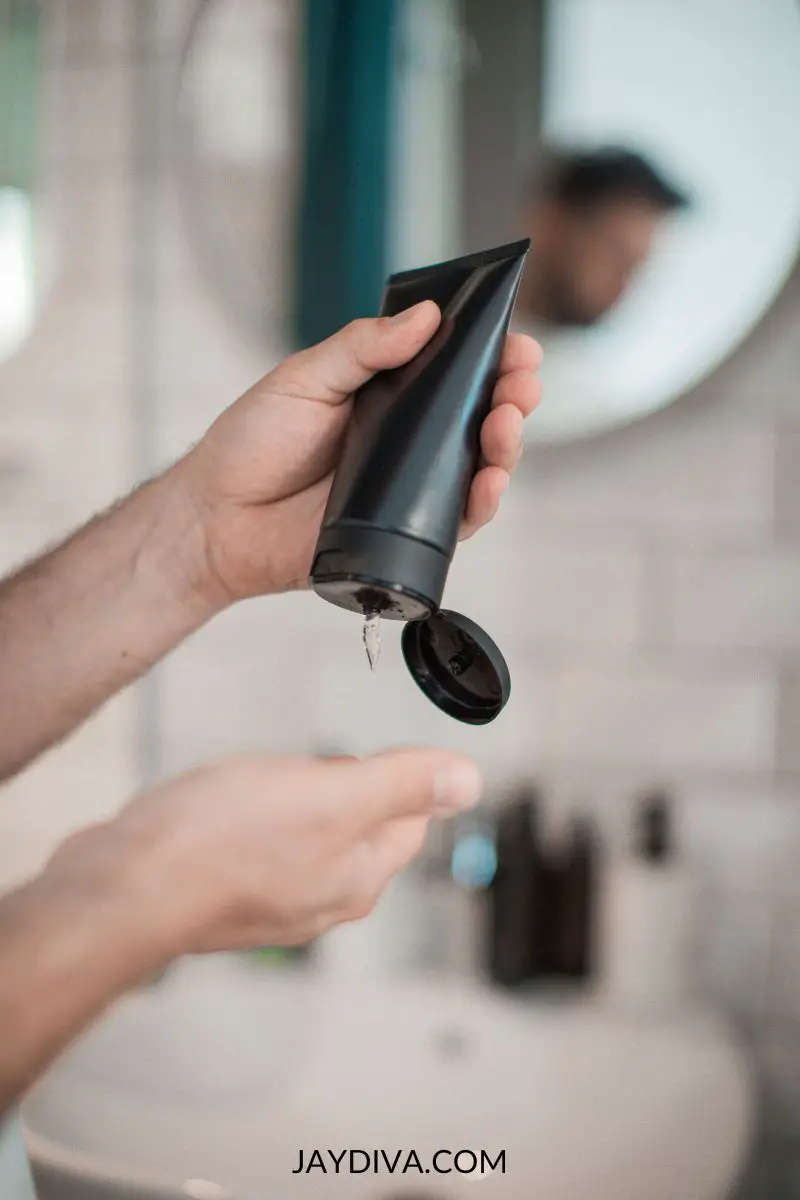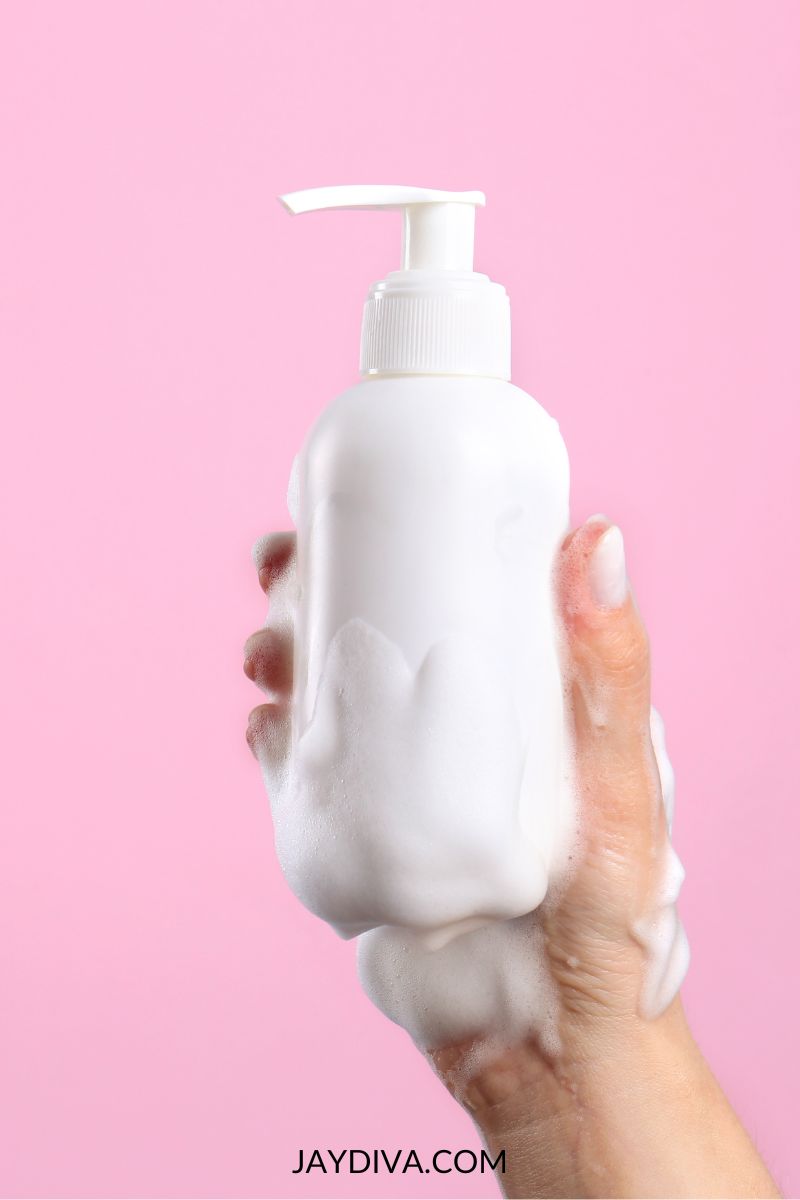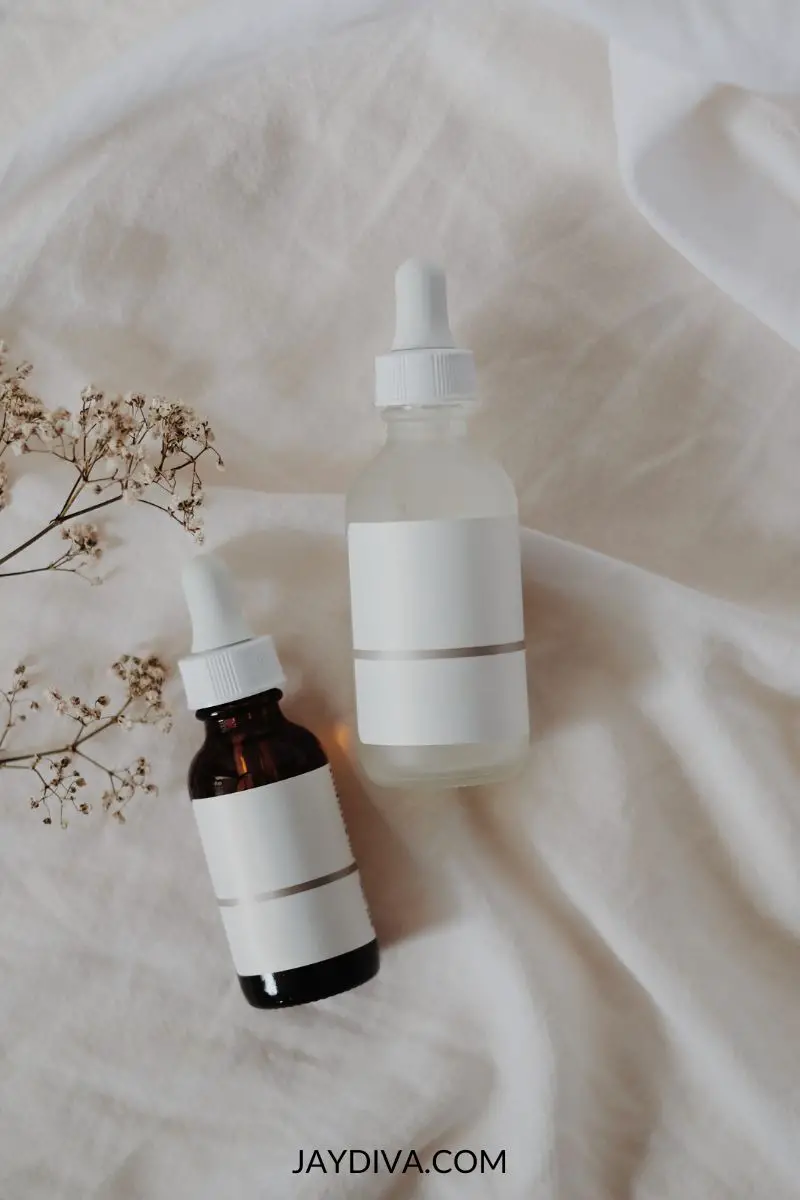Choosing the right facial cleanser is the cornerstone of any effective skincare routine, yet with the vast array of options available, it can feel overwhelming to find the perfect match for your skin. It is important to note that your skin type plays a crucial role in determining which cleanser will work best for you, as the wrong choice can lead to issues like dryness, irritation, or breakouts.
In this ultimate guide, we’ll walk you through everything you need to know about selecting a facial cleanser tailored to your unique skin type, ensuring your skin stays healthy, balanced, and glowing. Whether you have oily, dry, sensitive, or combination skin, we’ve got you covered.
So why don’t you grab a cuppa and let’s dive in…
Table of Contents
How to Chose the Right Cleanser for Your Skin Type
Facial cleansing is more than just a step in your skincare routine—it’s the foundation for healthy, radiant skin. Throughout the day, our skin is exposed to various environmental aggressors like pollution, dirt, and bacteria, not to mention the buildup of oils and makeup. If left unaddressed, these impurities can clog pores, lead to breakouts, and accelerate the aging process.
Cleansing your face removes these harmful elements, allowing your skin to breathe and better absorb the benefits of the products you apply afterward, like serums and moisturizers. However, not all cleansers are created equal, and using the wrong one for your skin type can do more harm than good.
For example, a cleanser that’s too harsh might strip away essential oils, leading to dryness and irritation. On the other hand, a cleanser that’s too rich might not adequately remove excess oil, leaving your skin feeling greasy and prone to acne. That’s why it’s crucial to tailor your choice of facial cleanser to your specific skin type. Whether your skin is oily, dry, sensitive, or a mix of different types, the right cleanser will help maintain its natural balance, ensuring it stays healthy, hydrated, and clear.
Understanding Skin Types

Before diving into choosing the right facial cleanser, it’s essential to understand your skin type. Everyone’s skin is unique, but most people fall into one of five common categories:
- Oily Skin: If your skin often feels shiny or greasy, particularly in the T-zone (forehead, nose, and chin), you likely have oily skin. This type tends to produce excess sebum, which can lead to enlarged pores and frequent breakouts.
- Dry Skin: On the opposite end of the spectrum, dry skin often feels tight, rough, or flaky, especially after cleansing. This skin type struggles to retain moisture and might appear dull or ashy without proper hydration.
- Combination Skin: As the name suggests, combination skin is a mix of both oily and dry areas. Typically, the T-zone is oilier, while the cheeks and other areas may be dry or normal. This type requires a balanced approach to skincare.
- Sensitive Skin: If your skin reacts easily to products, environmental factors, or even temperature changes, you likely have sensitive skin. This type can be prone to redness, itching, or irritation and requires gentle, soothing care.
- Normal Skin: Normal skin is well-balanced, meaning it’s not too oily or too dry. It typically has a smooth texture, even tone, and few blemishes. While this is the ideal skin type, it still needs consistent care to maintain its health.
How to Identify Your Skin Type
Identifying your skin type is the first step toward choosing the right facial cleanser. Here are some simple ways to determine what category your skin falls into:
- The Bare-Faced Test: Start with a clean face by washing it with a mild cleanser and gently patting it dry. Avoid applying any products, and after about an hour, observe how your skin feels.
- If it feels tight or looks flaky, you likely have dry skin.
- If your T-zone appears shiny but your cheeks feel normal, you probably have combination skin.
- If your entire face looks shiny and feels oily, you have oily skin.
- If your skin feels comfortable and balanced, you’re in the normal skin category.
- If you notice any redness, itching, or irritation, you might have sensitive skin.
- Blotting Sheet Method: Another quick test involves using blotting sheets, which absorb oil.
- Gently press a sheet against different parts of your face, particularly the T-zone and cheeks.
- If the sheet picks up a lot of oil from all areas, your skin is oily.
- If oil is only noticeable from the T-zone, you have combination skin.
- Little to no oil suggests dry or normal skin.
- Check Your Skin’s Texture: Pay attention to how your skin feels throughout the day.
- Oily skin often feels slick, while dry skin may feel rough or tight.
- Sensitive skin tends to be more delicate and may show signs of redness or irritation, especially after using certain products.
Types of Facial Cleansers

When it comes to facial cleansers, there’s no one-size-fits-all solution. Each type of cleanser has unique properties that make it more suitable for specific skin types and concerns. Here’s a breakdown of the most common types of facial cleansers so you can choose the one that’s best for your skin.
Gel Cleansers
Gel cleansers are perfect for those with oily or acne-prone skin. These cleansers have a lightweight, gel-like consistency that feels refreshing and cool on the skin. They are known for their deep-cleaning properties, effectively removing excess oil, dirt, and impurities from the pores. Many gel cleansers also contain ingredients like salicylic acid or tea tree oil, which help to prevent breakouts and keep your skin clear. If you struggle with an oily complexion or frequent acne, a gel cleanser can be your go-to option for keeping your skin clean and balanced.
Foam Cleansers
Foam cleansers are another popular choice for oily skin, thanks to their ability to remove excess oil and leave your skin feeling fresh and clean. These cleansers start as a liquid or cream and transform into a rich, foamy lather when mixed with water. The foaming action helps to lift away dirt and oil from the skin’s surface. However, foam cleansers can be a bit too harsh for dry or sensitive skin types, as they may strip away too much natural moisture, leading to dryness or irritation. If you have oily skin, a foam cleanser can help keep shine at bay, but if your skin is on the drier side, you might want to opt for something gentler.
Cream Cleansers
Cream cleansers are a dream come true for those with dry or sensitive skin. These cleansers have a rich, creamy texture that feels luxurious and soothing as you apply them. Unlike gel or foam cleansers, cream cleansers are formulated to be more hydrating, helping to nourish the skin while they cleanse. They work by gently removing dirt and makeup without stripping the skin of its natural oils. If your skin often feels tight, flaky, or irritated after cleansing, a cream cleanser can provide the gentle care and moisture your skin needs to stay comfortable and soft.
Oil Cleansers
Oil cleansers might sound counterintuitive, especially if you have oily skin, but they’re actually incredibly effective for all skin types. These cleansers use oils to dissolve and lift away dirt, makeup, and excess sebum without disrupting the skin’s natural moisture barrier. Oil cleansers are particularly great for removing stubborn makeup, and they include waterproof mascara and long-wear foundation. They’re also suitable for dry and sensitive skin because they cleanse without leaving the skin feeling stripped or tight. If you’re looking for a gentle yet powerful way to cleanse your skin, an oil cleanser could be the perfect addition to your routine.
Micellar Water
Micellar water is a gentle and convenient option that’s ideal for all skin types, especially those with sensitive or dry skin. This type of cleanser is made up of tiny micelles—small cleansing molecules suspended in water—that attract dirt, oil, and makeup like a magnet. Micellar water doesn’t require rinsing, making it a quick and easy choice for cleansing on the go or as the first step in a double cleansing routine. It’s incredibly gentle, making it perfect for sensitive skin, and it’s also hydrating, which is great for dry skin. If you’re looking for a fuss-free way to cleanse your skin, micellar water is a fantastic option.
Clay Cleansers
Clay cleansers are a powerhouse for those with oily or acne-prone skin. These cleansers are formulated with clay, which has natural absorbent properties that help draw out impurities, excess oil, and toxins from the skin. Clay cleansers can help to reduce the appearance of pores and prevent breakouts by keeping the skin clear and free of excess oil. They leave the skin feeling deeply cleansed and refreshed. However, because they can be drying, they’re best suited for oily or combination skin types. If your skin tends to get greasy throughout the day, a clay cleanser can help keep oil production under control.
Exfoliating Cleansers
Exfoliating cleansers are designed to do double duty: cleanse the skin and gently exfoliate away dead skin cells. These cleansers often contain small, granular particles or chemical exfoliants like alpha hydroxy acids (AHAs) or beta hydroxy acids (BHAs). They’re great for combination or dull skin, as they help to improve skin texture, brighten the complexion, and clear away buildup that can lead to clogged pores. However, exfoliating cleansers should be used with caution, especially if you have sensitive skin, as overuse can lead to irritation. If you’re looking to give your skin a bit of a glow boost, incorporating an exfoliating cleanser into your routine once or twice a week can make a big difference.
Choosing the Right Cleanser for Your Skin Type

Oily Skin
If you have oily skin, your primary goal is to control excess oil without over-drying your skin. Look for gel or foam cleansers that are specifically formulated to target oiliness. These types of cleansers work by deeply cleaning the pores, removing dirt, oil, and impurities that can lead to breakouts. Gel cleansers, in particular, are excellent because they’re lightweight and provide a refreshing cleanse that leaves your skin feeling clean but not stripped.
Foam cleansers are also effective, as they create a rich lather that can help to dissolve oil and give your skin a fresh, matte finish. When choosing a cleanser, opt for one that mentions “oil control” or “acne-fighting” on the label, and look for ingredients like salicylic acid or tea tree oil, which are known for their ability to combat excess oil and prevent breakouts.
Dry Skin
For those with dry skin, hydration is key. Your skin needs a cleanser that will remove impurities without stripping away its natural oils. Cream or oil-based cleansers are your best bet, as they are designed to nourish and hydrate while cleansing. Cream cleansers have a rich, creamy texture that helps to soothe and moisturize the skin as they cleanse, making them perfect for dry, flaky skin.
Oil-based cleansers work by dissolving makeup and impurities while leaving the skin’s moisture barrier intact, which is crucial for preventing further dryness. When choosing a cleanser for dry skin, look for ingredients like hyaluronic acid, glycerin, or ceramides, which help to attract and retain moisture. Avoid cleansers with harsh sulfates, as these can exacerbate dryness and leave your skin feeling tight and uncomfortable.
Combination Skin
Combination skin can be tricky to manage because it has both oily and dry areas. Typically, the T-zone (forehead, nose, and chin) tends to be oilier, while the cheeks may be dry or normal. Finding one that can balance these differing needs is the key to choosing a cleanser for combination skin. Gentle foaming or gel cleansers are a good option, as they can effectively cleanse the oily areas without over-drying the rest of your face.
Look for a cleanser that is labeled as “balancing” or “for combination skin.” These cleansers are formulated to remove excess oil from the T-zone while providing enough hydration to keep the drier areas of your skin comfortable. You might also consider using different cleansers for different parts of your face, but for simplicity, a balanced cleanser that addresses both concerns is ideal.
Sensitive Skin
Sensitive skin requires extra care and attention, as it can easily become irritated by harsh ingredients or aggressive cleansing. If your skin tends to react to new products or environmental changes, you’ll want to choose a cleanser that is gentle, soothing, and free from potential irritants. Fragrance-free, alcohol-free cleansers are the safest choice, as these are less likely to cause irritation.
Micellar water is a fantastic option for sensitive skin because it’s incredibly gentle and doesn’t require rinsing, which can sometimes irritate the skin. Cream cleansers are also a good choice because they provide a soothing, hydrating cleanse without stripping the skin of its natural oils. When selecting a cleanser for sensitive skin, look for calming ingredients like aloe vera, chamomile, or oat extract, which can help to soothe and protect your skin.
Normal Skin
If you have normal skin, you’re in the fortunate position of being able to use a wide variety of cleansers without much trouble. Normal skin is well-balanced, meaning it’s neither too oily nor too dry, and it usually doesn’t react adversely to new products. While most cleansers will work well for normal skin, it’s still important to avoid extremes.
Steer clear of cleansers that are too harsh or overly moisturizing, as these can disrupt your skin’s natural balance. A gentle gel, foam, or cream cleanser is usually all you need to keep your skin clean and healthy. Look for products that are labeled as “gentle” or “for normal skin” to maintain your skin’s natural balance and keep it looking its best.
Ingredients to Look For

When choosing a facial cleanser, focusing on these key ingredients can help you address your specific skin concerns more effectively. Whether you’re dealing with oily, dry, sensitive, or acne-prone skin, selecting a cleanser with the right ingredients will help keep your skin healthy, balanced, and glowing.
Oily Skin
If you have oily skin, you want ingredients that help control excess oil production without stripping your skin of its natural moisture. Look for:
- Salicylic Acid: This beta hydroxy acid (BHA) is a powerhouse for oily skin. It penetrates deep into the pores to exfoliate from within, helping to clear out excess oil and prevent clogged pores that can lead to acne. It also has anti-inflammatory properties, which can reduce redness and irritation associated with breakouts.
- Tea Tree Oil: Known for its natural antibacterial and anti-inflammatory properties, tea tree oil is effective at reducing acne and controlling oil. It helps to keep the skin clear and fresh without causing excessive dryness.
- Niacinamide: Also known as Vitamin B3, niacinamide is great for regulating oil production. It helps to reduce the appearance of enlarged pores and improves the overall texture of the skin. Plus, it has anti-inflammatory benefits, making it a good choice for acne-prone skin as well.
Dry Skin
Dry skin needs ingredients that provide deep hydration and help to strengthen the skin’s natural moisture barrier. Look for:
- Hyaluronic Acid: This ingredient is a hydration hero. Hyaluronic acid is a humectant, meaning it draws moisture from the environment into the skin, helping to keep it plump and hydrated. It’s lightweight yet intensely moisturizing, making it perfect for dry skin.
- Glycerin: Another excellent humectant, glycerin helps to draw moisture into the skin and lock it in. It’s often used in cleansers for dry skin because it helps to prevent the skin from feeling tight or dry after cleansing.
- Ceramides: Ceramides are lipids that naturally occur in the skin and are essential for maintaining the skin’s barrier. They help to prevent moisture loss and protect the skin from environmental damage. Including ceramides in your cleanser can help restore and maintain your skin’s natural moisture barrier, keeping it soft and smooth.
Sensitive Skin
For sensitive skin, the goal is to find ingredients that soothe and calm the skin without causing irritation. Look for:
- Aloe Vera: Known for its soothing and healing properties, aloe vera is a go-to ingredient for sensitive skin. It helps to calm irritation and reduce redness, making it ideal for delicate skin types.
- Chamomile: Chamomile has anti-inflammatory and antioxidant properties that help to soothe sensitive skin. It can reduce redness and calm irritation, providing a gentle, calming cleanse.
- Oat Extract: Oat extract is incredibly soothing and moisturizing, making it perfect for sensitive skin. It helps to reduce itching and inflammation while also providing a protective barrier that keeps the skin hydrated.
Acne-Prone Skin
If you struggle with acne, you need ingredients that target breakouts while preventing future ones. Look for:
- Benzoyl Peroxide: This powerful ingredient is known for its ability to kill acne-causing bacteria and reduce inflammation. It’s highly effective for treating moderate to severe acne but should be used with caution if you have sensitive skin, as it can be drying.
- Salicylic Acid: As mentioned earlier, salicylic acid is excellent for acne-prone skin because it exfoliates inside the pores, helping to clear out debris and prevent new pimples from forming. It’s also less irritating than benzoyl peroxide, making it a good option for those with sensitive, acne-prone skin.
- Glycolic Acid: This alpha hydroxy acid (AHA) exfoliates the surface of the skin, removing dead skin cells that can clog pores and cause breakouts. It also helps to fade acne scars and improve skin texture, making it a great choice for those dealing with post-acne marks.
Ingredients to Avoid

While it’s important to know which ingredients can benefit your skin, it’s equally crucial to be aware of those that might do more harm than good. By being mindful of these ingredients, you can help protect your skin from unnecessary irritation and keep it looking and feeling its best. When in doubt, always check the ingredient list and opt for products that are gentle, effective, and formulated with your skin’s health in mind.
Harsh Sulfates
Sulfates are commonly used in cleansers to create a rich lather and help remove dirt and oil. However, certain sulfates, such as sodium lauryl sulfate (SLS) and sodium laureth sulfate (SLES), can be too harsh on the skin. These sulfates can strip the skin of its natural oils, leading to dryness, irritation, and even an increase in oil production as your skin tries to compensate for the loss of moisture. This can be particularly problematic for those with dry, sensitive, or acne-prone skin. If you notice that your skin feels tight or dry after cleansing, check the ingredient list for harsh sulfates and consider switching to a sulfate-free cleanser that’s gentler on your skin.
Alcohol
Alcohol, particularly in its more drying forms like denatured alcohol or isopropyl alcohol, is often added to skincare products for its quick-drying, astringent properties. However, it can be very drying and irritating, especially for those with dry or sensitive skin. While alcohol can help reduce oiliness temporarily, it can disrupt the skin’s natural barrier over time, leading to increased dryness, irritation, and potentially even more oil production as the skin tries to balance itself out. If you have dry, sensitive, or combination skin, it’s best to avoid cleansers that list alcohol as one of the main ingredients and opt for alcohol-free formulas instead.
Synthetic Fragrances
Synthetic fragrances are added to many skincare products to enhance their scent, but they can be a major irritant, particularly for sensitive skin. Fragrances are often made up of a complex mix of chemicals, some of which can cause allergic reactions, redness, itching, or breakouts. Even if you don’t have sensitive skin, frequent exposure to synthetic fragrances can lead to skin sensitization over time. To avoid unnecessary irritation, choose fragrance-free cleansers, especially if your skin is prone to sensitivity or you’re dealing with conditions like eczema or rosacea.
Microbeads
Microbeads are tiny plastic particles that were once widely used in exfoliating cleansers and scrubs. While they can provide a physical exfoliation to help remove dead skin cells, microbeads have been found to be harmful to the environment. They are not biodegradable and can end up in oceans and waterways, where they pose a threat to marine life. Additionally, microbeads can be too abrasive for the skin, leading to micro-tears and irritation, especially if used frequently. Fortunately, many countries have banned the use of microbeads in skincare products, but it’s still a good idea to be cautious and choose exfoliants that use natural, biodegradable alternatives like jojoba beads, ground oats, or sugar.
How to Properly Use a Facial Cleanser

Using a facial cleanser correctly is just as important as choosing the right one. To get the most out of your cleanser and keep your skin in top shape, follow these simple steps:
Proper Technique
- Wash Your Hands First: Before you start cleansing your face, make sure your hands are clean. This step is crucial because it prevents the transfer of dirt, bacteria, and oils from your hands to your face. Clean hands ensure that your cleanser can work effectively without spreading additional impurities.
- Use Lukewarm Water: Temperature matters when it comes to cleansing your face. Start by wetting your face with lukewarm water. Lukewarm water is ideal because it helps to open your pores, allowing the cleanser to penetrate deeper and remove impurities without stripping your skin of its natural oils. Avoid using hot water, which can cause dryness and irritation, and cold water, which can close your pores and reduce the effectiveness of the cleanse.
- Gently Massage the Cleanser Into Your Skin: Apply a small amount of cleanser to your fingertips, then gently massage it into your face using circular motions. Focus on areas that tend to accumulate more dirt and oil, like the T-zone (forehead, nose, and chin). Be sure to be gentle and avoid scrubbing too hard, as this can irritate your skin. Take your time to ensure that the cleanser is thoroughly worked into your skin, allowing it to break down makeup, oil, and impurities.
- Rinse Thoroughly: After massaging the cleanser into your skin, rinse your face thoroughly with lukewarm water. Make sure to remove all traces of the cleanser to prevent residue that could lead to clogged pores or irritation. Gently pat your face dry with a clean towel—avoid rubbing, as this can cause unnecessary friction and irritation.
Cleansing Frequency
How often you should cleanse your face depends on your skin type and lifestyle:
- Oily Skin: Oily skin tends to produce more sebum, so cleansing twice a day—once in the morning and once at night—is typically recommended. Morning cleansing helps to remove excess oil that accumulates overnight, while evening cleansing removes the day’s buildup of dirt, oil, and makeup.
- Dry or Sensitive Skin: If you have dry or sensitive skin, cleansing once a day, preferably in the evening, might be enough. Over-cleansing can strip your skin of its natural oils, leading to further dryness and irritation. In the morning, you can simply rinse your face with lukewarm water to refresh your skin.
- Combination Skin: Depending on your skin’s needs, you might choose to cleanse twice a day or just once, focusing on areas that are oilier and using a gentler approach on drier areas.
- Normal Skin: If you have normal skin, cleansing twice a day is generally fine, but if your skin feels comfortable with just one cleanse, especially in the morning, that can work too. Listen to your skin and adjust accordingly.
Post-Cleansing Care
Cleansing is just the first step in your skincare routine. To ensure your skin stays healthy, hydrated, and protected, follow up with these essential steps:
- Toner: After cleansing, apply a toner to help balance your skin’s pH levels and remove any lingering impurities. Toners can also provide an extra layer of hydration and prepare your skin for the next steps in your routine. Choose a toner that’s appropriate for your skin type—hydrating toners for dry skin, clarifying toners for oily skin, and soothing toners for sensitive skin.
- Serum: Serums are concentrated treatments that target specific skin concerns, such as hydration, brightening, or anti-aging. After toning, apply a serum that addresses your skin’s needs. Serums can penetrate deeper into the skin, delivering active ingredients that help to improve your skin’s texture, tone, and overall appearance.
- Moisturizer: No matter your skin type, moisturizing is crucial. A good moisturizer helps to lock in the benefits of your serum and keeps your skin hydrated and protected throughout the day or night. If you have oily skin, choose a lightweight, non-comedogenic moisturizer. For dry skin, opt for a richer, more emollient formula. Sensitive skin types should look for fragrance-free and hypoallergenic options.
Final Takeaway
Choosing the right facial cleanser isn’t just another step in your skincare routine—it’s the cornerstone of achieving healthy, glowing skin. Understanding your skin type and selecting a cleanser tailored to its needs can set the foundation for a routine that truly enhances your skin’s health.
It’s important to use your cleanser properly, cleansing at the frequency that best suits your skin type and following up with key post-cleansing care to lock in moisture and target specific concerns.
With the right cleanser and a mindful approach, you can enjoy a clear, balanced, and radiant complexion that feels as good as it looks. Investing in the right products and techniques will pay off in the form of healthier, happier skin.





















